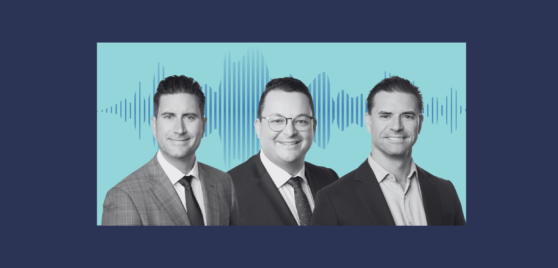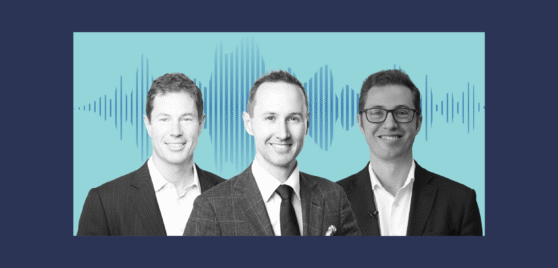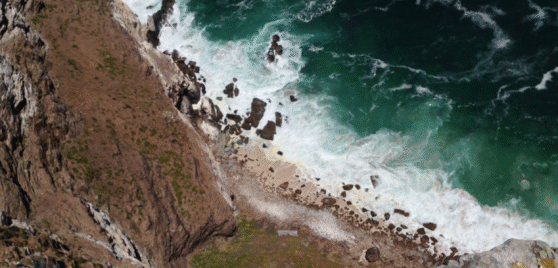Featuring Marc Whittaker
LISTEN
READ
Integral Diagnostics (ASX:IDX) had a great year in 2024; its share price was up around 50% as its business recovered from the post-Covid doldrums. It has just completed a merger with Capitol Health to make it Australia’s second largest radiology provider and IML portfolio manager Marc Whittaker believes this has it well set up for its next phase of growth.
In this podcast Marc discusses why Integral Diagnostics is one of his highest conviction holdings in IML’s small and mid cap funds.
Follow our podcast, ‘Navigating the Noise’ on Spotify, Apple or Amazon to be notified of new episodes.
 |
 |
 |
Lightly edited transcript – Recorded on 13 January
Carl McMinn: Hello and welcome to Navigating the Noise, a podcast by Natixis Investment Managers Australia, where we bring you insights from our global collective of experts to help you make better investment decisions. I’m Carl McMinn, and today I’m joined by Marc Whitaker, one of our portfolio managers in IML’s small and mid-cap team, to discuss our stock of the month, Integral Diagnostics, ASX ticker IDX for those playing at home. Marc, welcome to the podcast.
Marc Whittaker: Carl, thank you for having me. Good to see you. Good to hear you again.
Carl: Happy New Year! It’s always great to chat to you, Marc. I’m looking forward to today. As mentioned, we’re going to talk about Integral Diagnostics, Australia’s second largest radiology provider after the merger with Capitol Health. Can you take us through their business model and why IML thinks it’s a good investment?
Marc: Sure. So when you think about the Aussie market and where growth is really emerging and projecting itself, there are a couple of sectors. One is technology, which we probably all know about, and that’s a very typical area. The other area in the market that has good growth in front of it is healthcare.
We like healthcare because we think it’s defensive; the revenues and the earnings in that sector tend to be recurring, predictable, and growing. We’ve certainly seen that with diagnostic imaging or radiology. That’s a part of healthcare that is growing very nicely when you look at the long-term growth trends within healthcare generally and then within diagnostic imaging. On top of that, you’ve got underlying volume growth of four to five per cent, so good growth that is well ahead of population growth.
That’s a good underpinning for the sector for the long term in terms of where we see growth and the prospects for operators within that particular sector. But one thing to note with radiology is that if you’re going to be successful, you need to make significant investments, and that investment is in equipment—scanners, whether it’s CT scanners, ultrasound, X-rays, and so forth. You also need to make investments in radiologists and nurses, and radiologists can be expensive as well.
One of the things you want to have as a player or provider in radiology is scale. If you look at IDX over a number of years, they’ve made quite a few acquisitions to grow the size of their business or the footprint of their business. This growth by organic means and by M&A or acquisitions and mergers has allowed the business to reinvest back into technology, so they can continue to grow the business and stay at the cutting edge of radiology imaging. This has been very important.
The other thing you want with a good radiology company is the ability to utilise the equipment that you have. If you’re spending $1 million on a CT scanner, for example, you want that scanner running as long as you can every day of the week. You want volume going through these very expensive pieces of equipment, and you want your radiologists, who you’re paying a reasonable amount of money to, to be working as many hours in the day and days in the week as possible.
So it’s about scale and utilisation. One of the main reasons why we like IDX is because it’s in a good space—it’s in healthcare, it’s in diagnostic imaging, which is growing very nicely, and it has that scale to it. It also has the ability to maximise the workflows across its footprint. The bigger the footprint, the more hubs, so to speak, where they can direct patients to particular radiology centres for treatment and scans. The more they can utilise the equipment that they have in place, the more volume they’re putting through, the more scans they’re generating, and the more scans that radiologists are looking at.
This generates operating leverage and operating efficiencies that really help the margin of the business, the operating margin. Again, this starts to generate good earnings growth and good cash flow growth, and that’s another reason why we like this particular business. Its ability to generate good cash over a long period of time.
It has good tailwinds from technology as well. So you’ve got AI coming into radiology now, and you’ve got tele-radiology coming into the space, which is the ability for radiologists in remote locations to look at and assess scans from other locations. Again, that’s about utilising your radiologists and getting as much bang for your buck out of your equipment and out of your radiologists as possible. So those are some of the really strong points about IDX in particular that we like and then at the same time, you’ve got a nice tailwind with the sector as well—population growth, the ageing population—all these things helping to generate very good growth for the sector.
Carl: You touched on it then—that tailwind of Australia’s ageing population. Do you have any stats to back up that thesis? Can you expand on the growth resulting in radiology services from all Australians getting older?
Marc: I think there are two sides to the population argument. Firstly, the population is growing; we’ve got people arriving in the country, and we’ve got a birth rate that’s reasonably high by global Western standards as well. So we’ve got the population growing, and then we’ve got the percentage of the population deemed to be older Australians, if I can use that term, is also growing as a percentage of the population.
If we look at the Australian population today, one in six people are aged over 65. Now that’s projected to go to one in five people by about 2050 or so. And of course, when you hit 65, people’s health and fragility tends to increase a little bit. So, one of the issues with an ageing population is that the prevalence of chronic disease tends to increase quite dramatically.
One of the great things about imaging over the last few years is that the technology gains in imaging have been such that what imaging can capture in terms of disease and the early stages of disease has been improving over time. We’ve got an increasing demand for imaging as a form of defensive medicine, if you will, for the ability to scan people to find something that may not be an issue yet but is emerging as an issue. We can start to use scans in that way, and the precision and clarity of scans that we’re getting now is such that you can find more things earlier and you can also find more things.
As a duty of care or a standard of care for doctors, sending a patient to get a scan is a default action in this day and age. If you can give the patient the highest quality of medicine, often that will involve some sort of scan. What we’re seeing is this drive in demand for imaging. If you look at the volume growth in imaging over the last 15 years or so, imaging volumes have grown at about 4%.
When you think about the population probably growing at 1% to 2%, you can see it’s certainly growing at multiple times that population growth, and that’s going to continue as the population increases and ages over the next 15 years or so.
Carl: Great. Well, we know IML only invests in companies that offer reasonable value. How does IDX stack up valuation-wise compared to similar companies?
Marc: It’s one of my highest conviction holdings in the small and mid-cap portfolios that we have here at IML. Post the merger with Capitol, IDX is very well positioned from a geographical spread. It’s going to have operations in Queensland and Victoria. It’s been in Victoria previously, but only in regional Victoria. So the merger with Capitol gives them metro Melbourne, which is a very high prospective area for them. They should do really well there, and then they’ve got operations in WA. They don’t have anything in NSW to any great degree, but that’s probably an argument for a later stage in terms of where they may look to grow in the future.
In terms of what the company will look like post its acquisition of Capitol, it will have 155 clinics across the country and over 350 radiologists. They’re going to have that scale, and they’re going to have synergies coming out of these acquisitions. On our earnings forecast, this business will be on about eight times EBITDA in fiscal 2026. Now, people might say, “Marc, what does that mean?”
When you think about the mergers and acquisitions that have happened in the radiology space in the last five years or so, a lot of that has been done at the hands of private equity coming in and buying out radiology practices. A lot of those deals are being done on something like 12 to 15 times EBITDA. So this business is going to be trading at a substantial discount to what we’ve seen in terms of transactions on the market.
When you think about the footprint it’s going to have, its national presence, the fact it’s in that top two or three nationally in terms of scale and size, it’s believed to generate good cash. It’s going to have a very strong balance sheet post this acquisition. The company is just very well placed and trading on a multiple which I think is very attractive. I can see this business performing very well for us over the next three to four years.
When you think about the dividend yields, we like dividends here at IML. It’s great to have earnings growth; we really like that. But when we think about where the dividend yield can go over the next couple of years, this company should be yielding something over 5% in the next year or two. So it should be generating good cash. It’s got that scale, so it’s going to be able to reinvest a lot of what it generates in terms of free cash back into investing in new technology, new equipment, and so on. But it’s going to have plenty left over to pay back the shareholders in the form of dividends as well. So that’s something to get quite excited about.
It’s got a very good balance sheet as well. As I say, post the acquisition, the ability for the company to continue to look at acquisition opportunities going forward over the next year or two will be very strong. As I say, NSW looks like a pretty obvious area for them to look at as well.
Carl: Makes sense. In the other states, everyone moves to Queensland to retire anyway, don’t they, Marc? So that makes sense.
Marc: That’s right. Well, they’ve got the Sunshine Coast and the beach areas covered, so they think they’ve got a good footprint there for sure.
Carl: So you’ve held IDX for some time now, Marc. It’s performed well. The share price is up close to 50% over the past year. How do you see it moving forward from here over the medium to long term?
Marc: IDX really remains one of our top conviction holdings across the small and mid-cap funds here at IML. That increase that we have seen in the share price over the last 12 months or so really harks back to the recovery of the business from COVID. COVID was an impost on the business; we saw a fall in volumes and utilisation across the business. A lot of that share price recovery is just the recovery in the business that we’ve seen back to more of a business-as-usual state of affairs.
Looking forward, it’s really about the synergies and the opportunities that come on the back of the acquisition of Capitol Health and how the business is really well positioned now to continue to grow, continue to re-invest back into its business. Also, given the strength of the balance sheet, it can put that balance sheet to work to make additional acquisitions over the next two to three years.
So, lots to like about the business, lots of opportunity in front of it, lots of synergies and opportunities to continue to take out of the acquisition with Capitol. The valuation remains compelling, as we’ve spoken about, so there’s still a lot to like about this stock.
Carl: Awesome. Thanks, Marc. It’s been great to have you today and understand more about Integral Diagnostics and why it’s such a high conviction play for IML’s small and mid-cap team right now. So thanks to everyone for listening. Please click follow on your favourite podcast platform to hear more from Marc and the team at IML, as well as others from our global collective of experts.
Disclaimer:
This podcast has been prepared and distributed by Natixis Investment Managers Australia Proprietary Limited, ABN 60 088 786 289, AFSL 246830 and includes information provided by third parties, including Investors Mutual Limited (“IML”) AFSL 229988, the responsible entity and investment manager for the IML Funds.
Although Natixis Investment Managers Australia believes that the material in this podcast is correct, no warranty of accuracy, reliability, or completeness is given, including for information provided by third parties except for liability under statute which cannot be excluded. This material is not personal advice. The material is for general information only and does not take into account your personal objectives, financial situation or needs. You should consider and consult with your professional advisor whether the information is suitable for your circumstances. The opinions expressed in the materials are those are the speakers and may not necessarily be those of Natixis Investment Managers Australia or its affiliate investment managers. Before deciding to acquire or continue to hold an investment in a fund, you should consider the information contained in the product disclosure statement in conjunction with the target market determination, TMD, available at www.stg-imlimited-staging.kinsta.cloud.
Past investment performance is not a reliable indicator of future investment performance and no guarantee of performance, return of capital, or a particular rate of return is provided. Any mention of specific company names, securities or asset classes is strictly for informational purposes only and should not be taken as a recommendation to buy, hold, or sell. Any commentary about specific securities is within the context of the investment strategy for the given portfolio. The material may not be reproduced, distributed, or published in whole or in part without the prior written consent of Natixis Investment Managers Australia.
Copyright 2025 Natixis investment Managers Australia. All rights reserved.
INVESTMENT INSIGHTS & PERFORMANCE UPDATES
Subscribe to receive IML’s regular performance updates, invitations to webinars as well as regular insights from IML’s investment team, featured in the Natixis Investment Managers Expert Collective newsletter.
IML marketing in Australia is distributed by Natixis Investment Managers, a related entity. Your subscriber details are being collected by Natixis Investment Managers Australia, on behalf of IML. Please refer to our Privacy Policy. Natixis Investment Managers Australia Pty Limited (ABN 60 088 786 289) (AFSL No. 246830) is authorised to provide financial services to wholesale clients and to provide only general financial product advice to retail clients.






